“By the time we land back in Milwaukee, these guys are very tired — a lot of them are in their 80s and 90s. They know there is going to be a homecoming. But they have no idea what it's going to be.
“So you walk along with them. In the distance you could begin to hear this sort of rumbling. It's not distinct at first. Something is out there, but you can't hear it from the corridor. [And then they turn a corner and there is massive crowd waiting for them in the terminal. Family members. Neighbors. Children, grandchildren, and great grandchildren holding signs and cheering for them.]
(@2013 Visual Image Photography)
“I was walking next to one of the guys and he said, ‘This is like heaven.’ And I said, ‘What do you mean?” And he said, ‘It's like seeing all the people you loved, and you cared about. It's like having your whole life before you and realizing that what you did mattered. That it was actually worth it. To see my grandkids and my kids…’ That is a powerful moment.
“This is a precious legacy that we have gotten from these guys. We cannot squander it. We cannot waste it.
“You guys were good dads. You were good moms. You sacrificed for us. You took care of us. And we never told you when we had a chance. This is where we get to say thank you. You mattered. We remember you. Thank you. You deserve this.”
—From the documentary Honor Flight
We’ll be back to our regular programming later this week, but on the 80th anniversary of D-Day, I wanted to look back at the extraordinary efforts of the men and women of the Stars and Stripes Honor Flight. And the WWII heroes they flew.
**
From the book: Honor Flight: A Visual Journey, my contribution:
They are always surprised. No matter how much they may have heard about the flight - the memorials, mail call, the Homecoming, they are still surprised by the day and the outpouring of gratitude and enthusiasm. Perhaps that is because they were the unentitled generation; they never asked for this and never expected it, certainly not seven decades later.
The truth is that many of these men and women thought of themselves as being on the shelf; some had been retired for 20 years or more. In our youth culture, with its cultivated historical amnesia, we were perfectly happy to ignore them, and they had gotten used to that.
For the most part they didn't want to talk about the war. In the 1950s, they
worked hard to build their lives, raise their families, and spare our generation from having to endure the privations they had experienced. In the '60s and '70s, they watched as the boomers rebelled against their values and proclaimed themselves the brightest, most compassionate generation ever. In the '80s and '90s, they retired, and began to watch their brothers begin to slip away. For too many, the WWII memorial came too late.
Then something changed. Not in them, but in our culture and in our generation. We started to remember who the Greatest Generation really was. (Hint: it wasn’t us.)
We also began to realize that time was slipping away and that we had serious unfinished business. There were things to be said, commitments to be honored, debts to be paid.
(@2013 Visual Image Photography)
I had paid only sporadic attention to the push to create the National World War II Memorial, but I knew it was important to my mother, who began writing small checks to the foundation and sending me updates on the campaign. It was only after she died in 2007, however, that I understood how much it meant to her. In an earlier newsletter, I wrote about the metal box I found in which she kept every record of her first husband's military service. You can read about that here.
Neither my mother nor my father — who was also a WWII veteran — ever got to see the National World War II Memorial. Maybe that's why something clicked in me when Joe Dean and Renee Riddle showed me pictures from an early Honor Flight. You could see how moved and grateful the veterans were, and how genuinely surprised they were to be treated like kings for a day. They never asked for it, but it was obvious that the flight was a defining moment in their lives. You could see something else too: the excitement of those 19-year-old boys who once saved the world in places like Iwo Jima and Normandy.
I still remember the day in late 2009, when I walked down the hall of the WTMJ radio studios and asked our broadcast groups operations manager, Tom Land, if we could make this our cause. He surprised me by immediately saying yes. We didn't need to form a committee or run it past other departments. We were in.
And I knew we were in over our heads. The original goal was to raise $150,000 to lease a 747 to send 300 veterans to Washington DC.. That was far more than I had ever raised on the air and, as much as it meant to me personally, I certainly couldn't be sure we'd be successful. if we failed, the plane wouldn't fly and the veterans, who had so little time, would be left waiting. Then on the morning in January 2010 when we were set to announce the campaign, Operation Resolve, I was told that we actually needed to raise $250,000. It seemed impossible.
We not only raised enough money for one 747, we raised enough to send dozens of 747s, eventually sending thousands of veterans to see their national memorial.
Over the next three years, Wisconsin embraced a generation of heroes who would never again be forgotten. And we will never forget their faces.
(@2013 Visual Image Photography)
**
At the Homecomings, thousands of people gathered on the concourse of Milwaukee’s Mitchell International to greet the Honor Flights on their return, but for the veterans, the experience was intensely personal. Whole families, sometimes two or three generations, came together to welcome them home from this final mission, many of them holding signs and pictures for their veteran.
It is impossible to capture the power of the moment when a 91-year-old man, walking slowly into the terminal, already overwhelmed by the day and the size of the crowd waiting for him, catches sight of his grandchildren in the crowd waiting for him.
Returning to Milwaukee’s Mitchell International after a Honor Flight to see the WWII Memorial in Washington D.C. (@2013 Visual Image Photography)
This is why we fly. For these heroes.
**
You can watch the trailer for the movie here:
God bless them all.






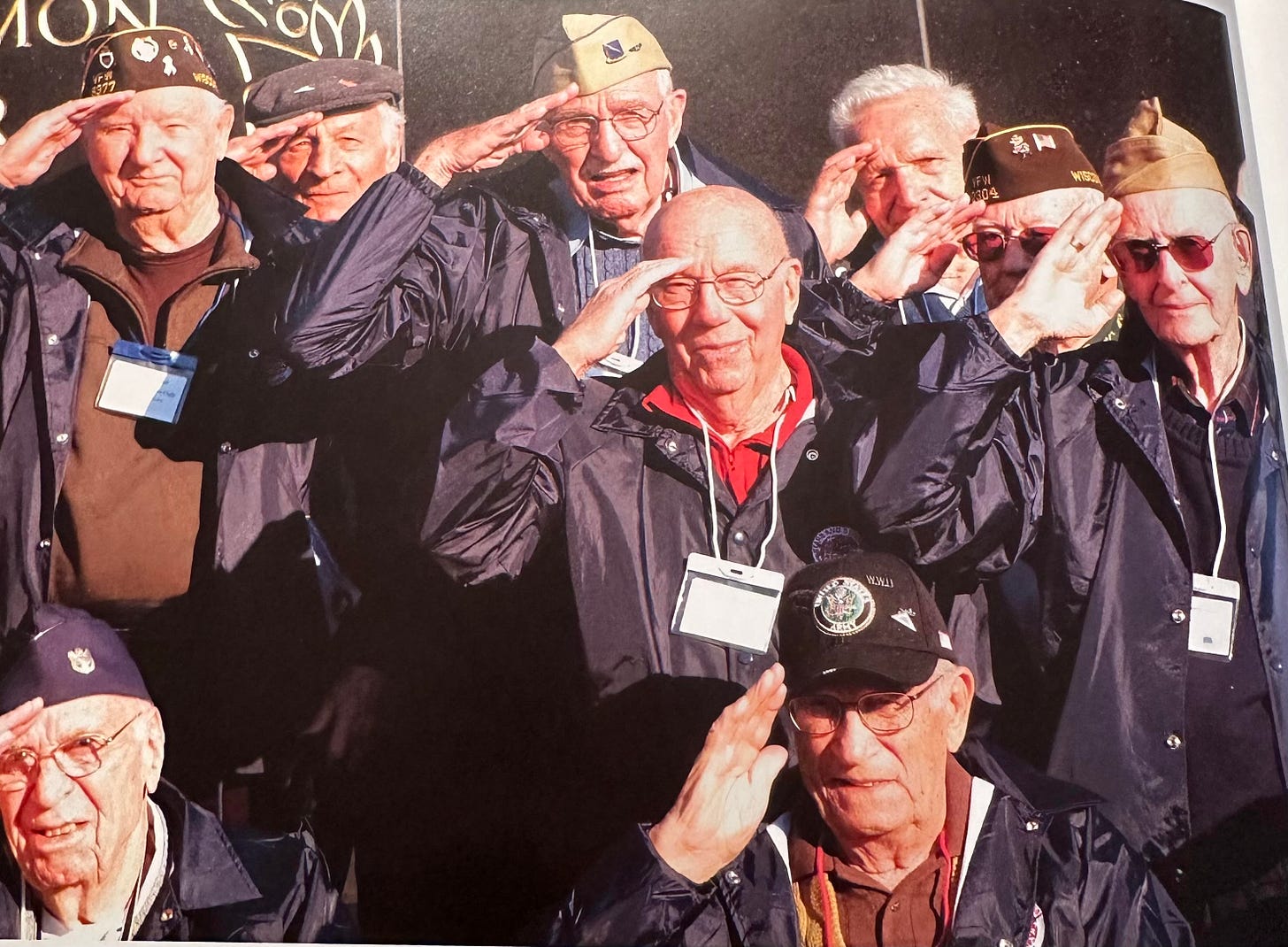


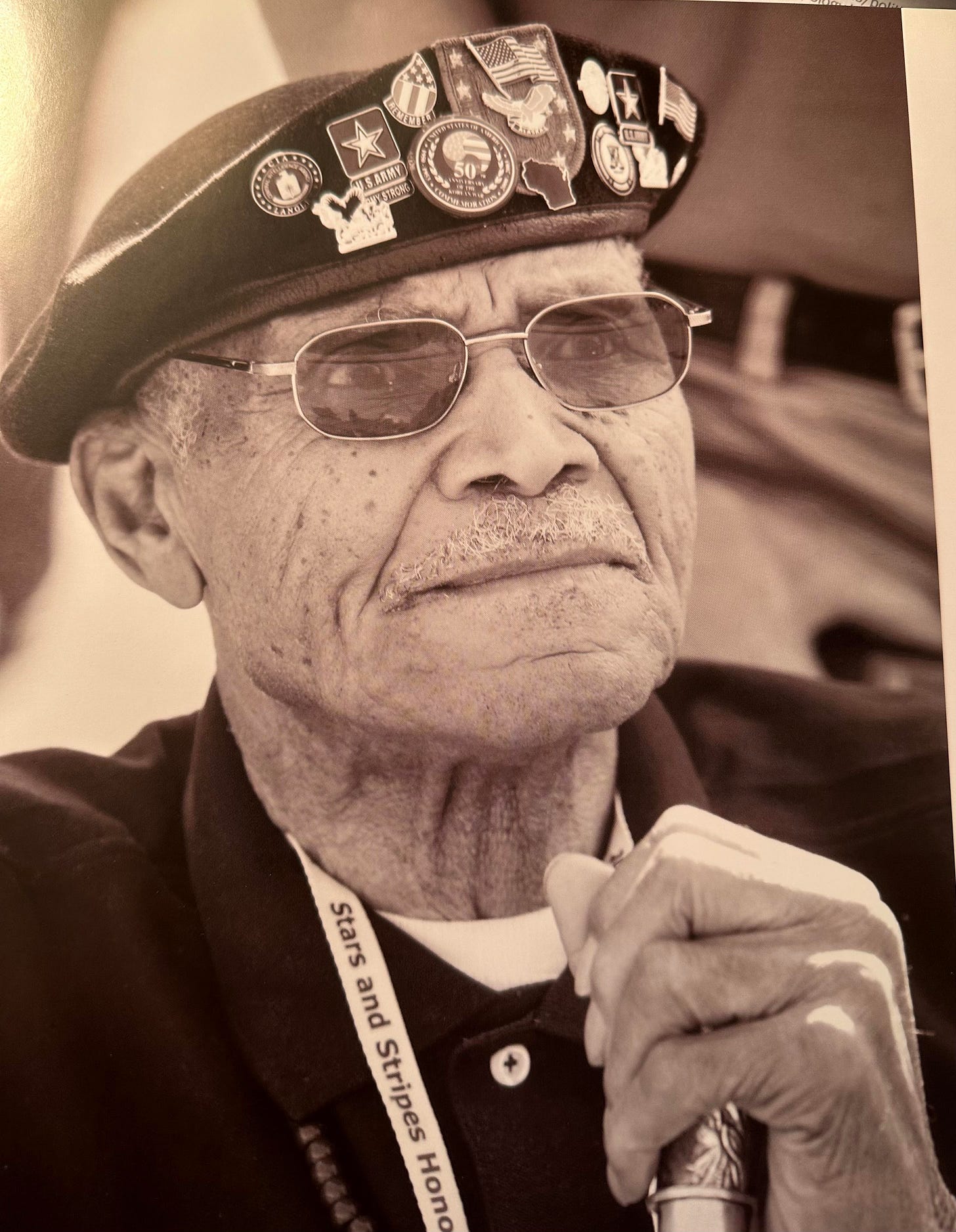
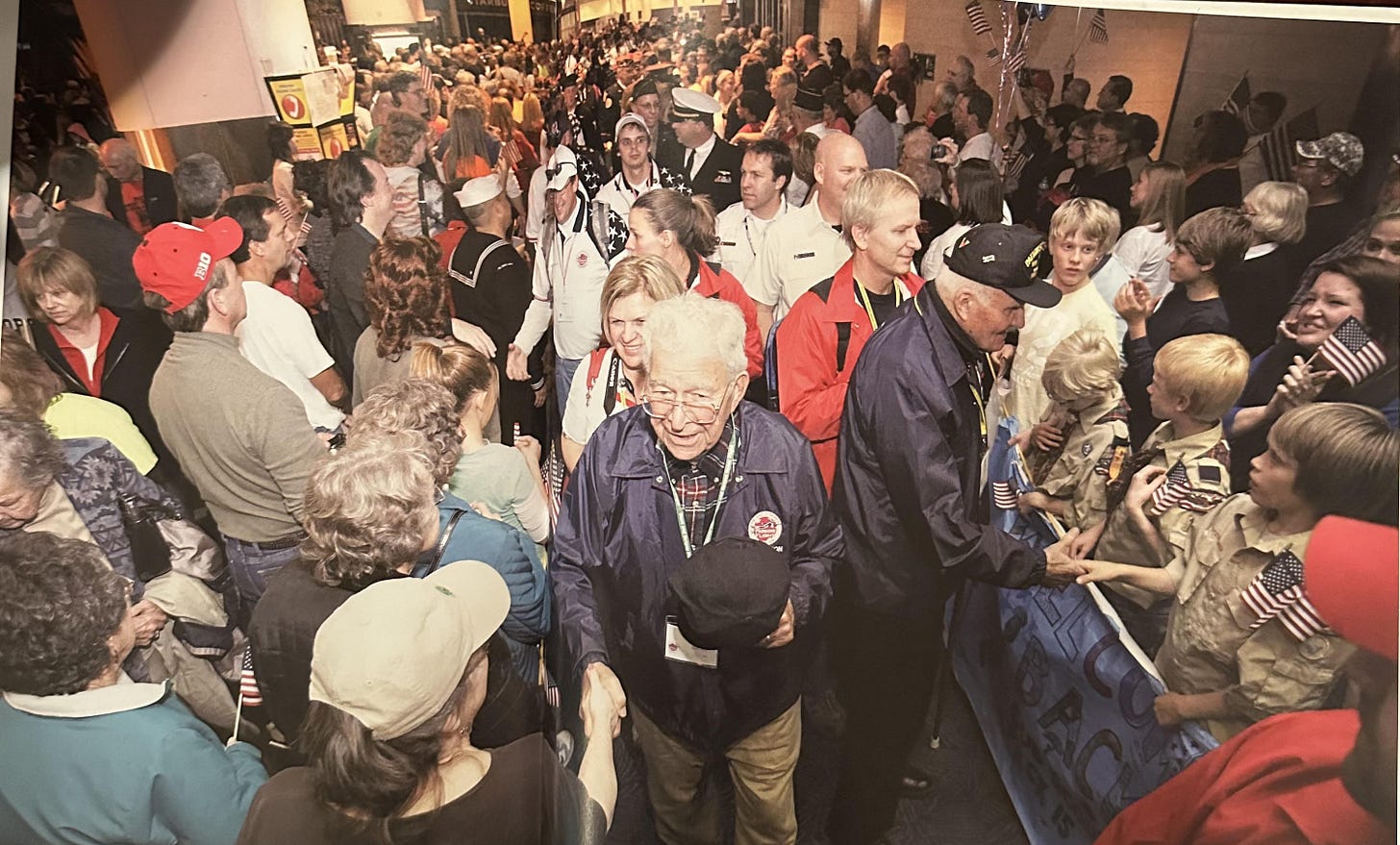

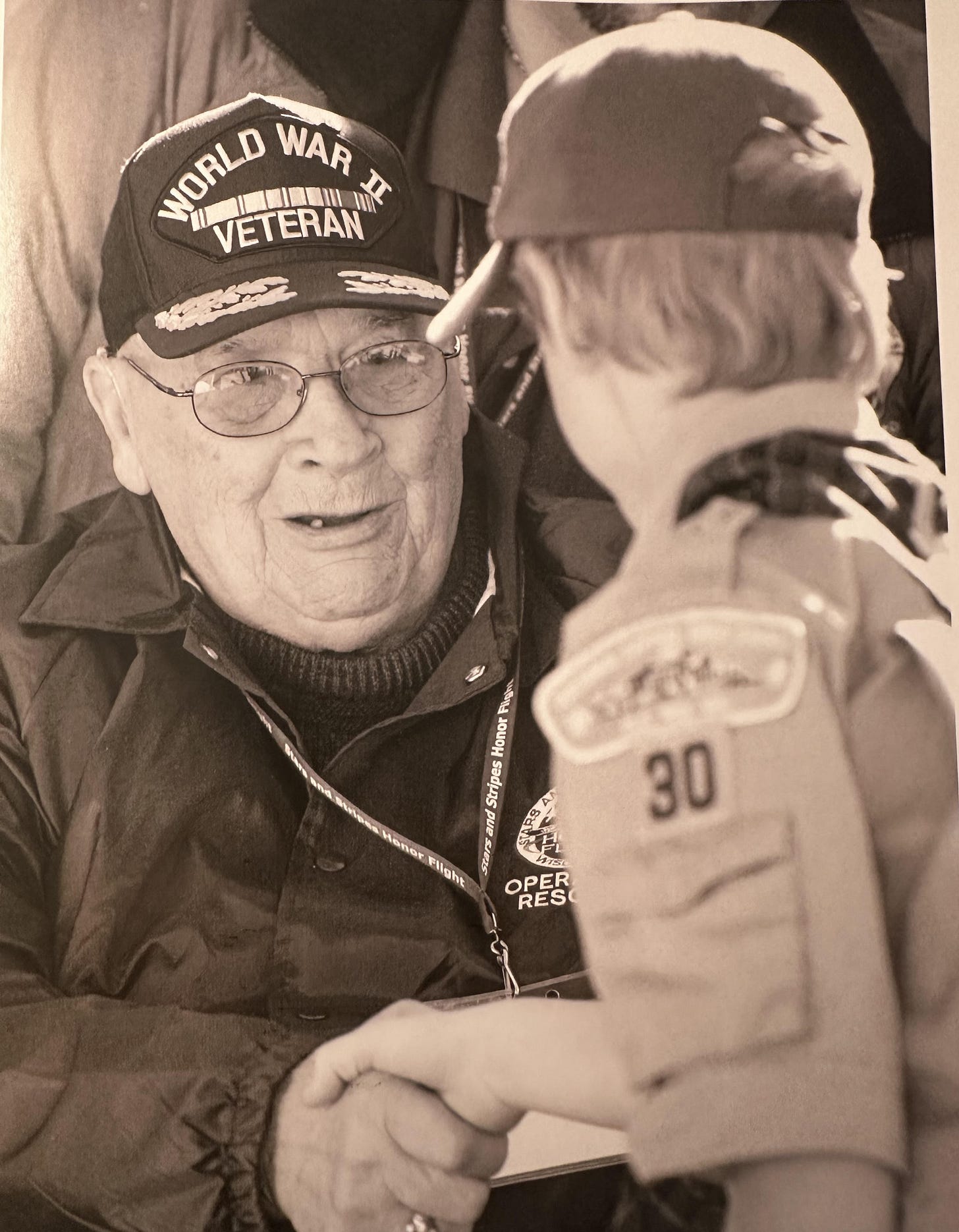
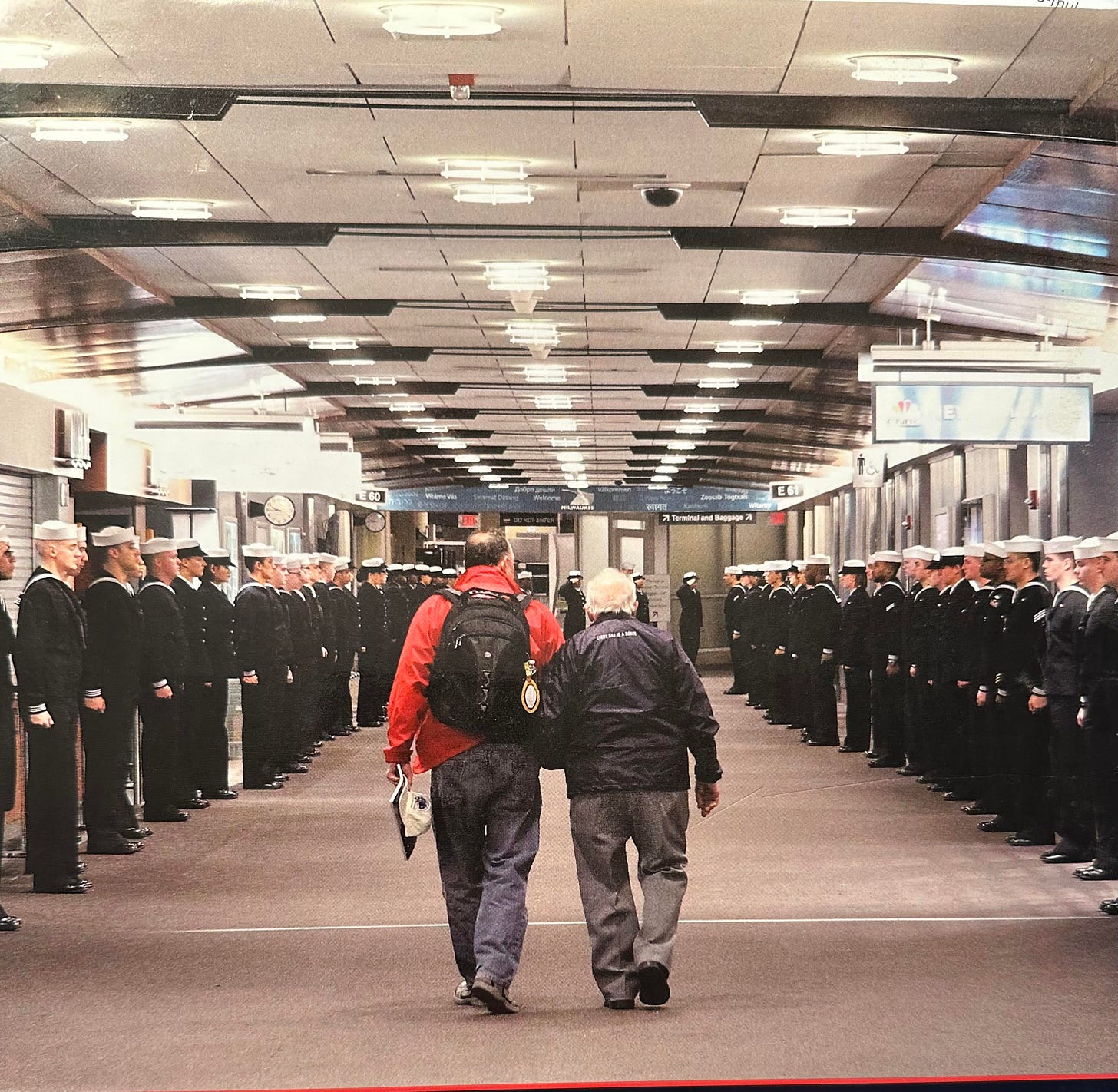
My Dad served in New Guinea during WWII, part of an infantry supporting a MASH. He never talked about the war, though there were hints around the edges about what his service had meant to him. He died well before the WWII memorial was completed, and I’m not sure he would have traveled to DC from Long Island to see it in any case. But the memorial brings me great comfort, and I’m glad you helped a host of WWII vets from Wisconsin travel there to see it. What you did for them, you also did for him.
Thank you, Charlie, but even more, thank you to them. It is wonderful to see them treated to respect and gratitude, to make them feel like kings. They are lionhearted, and a quickly vanishing pride.